6 Reasons Buffalos May be the Snarkiest Beasts on the Planet
Buffalo are big animals that belong to the Bovidae family. There are only two types: the African or Cape buffalo and the Asian water buffalo. Although buffalo are sometimes confused with the American bison, they are a different genus altogether.
1. They're big and they're strong
A buffalo is big. Really big. Fully grown, it can be between 1.8 – 3.4 metres long (6 – 11 feet); 1 – 1.7 metres tall (3.2 – 5.6 feet) and weigh between 300 – 860 kilograms (660 - 1,900 pounds). It has a massive head and boss (horns), a broad chest and sturdy legs. It's said to be four times stronger than an ox.
2. They're dark, moody and tough
Buffalo have a thick hide covered in brown-black hair which makes them easily camouflaged, especially in poor light and the shady areas where they like to hang out.
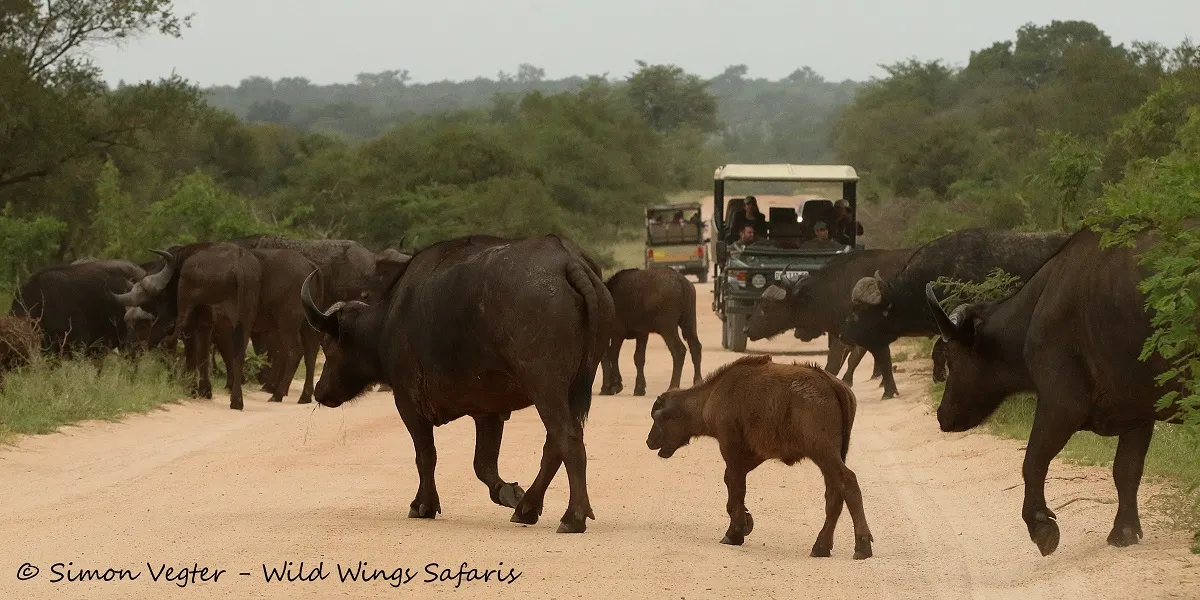
Buffalo crossing
Its neck hide is particularly tough and thick to protect it from scuffles with other buffaloes – like when they're fighting for dominance - but unfortunately, not quite thick enough to protect it from a lion's teeth.
3. They can take company, or leave it
Buffaloes can exist in herds of literally thousands. Or cosy herds of just a dozen or so females, calves and a male or two. Often, the old, bad-tempered males leave the herd and hang around in small groups and wallow in the mud.
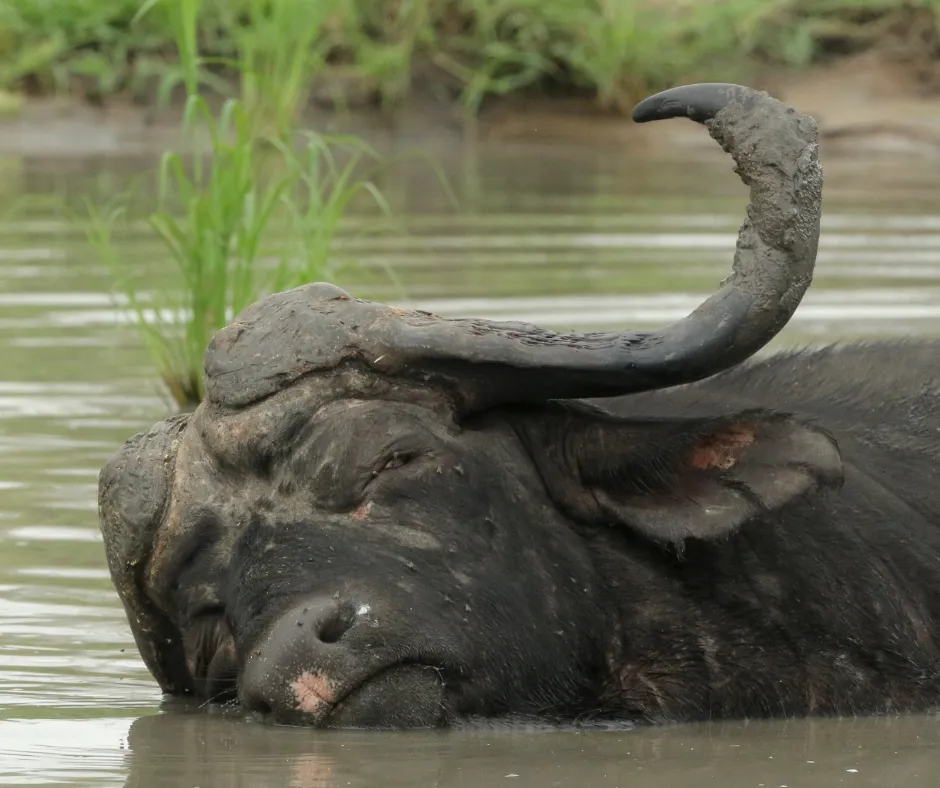
Taking a dip.
These grumpy guys are commonly known as 'dagga boys' (dagga comes from a mix of local languages and refers to cement or mud/dung mix used in building). A lone buffalo is easy prey for lions or even an opportunistic group of hyena.
4. They're pretty adaptable
Although you'll never find them too far from water, they're happy on the open veld, woodlands, forests and riverine forests. They're strong swimmers and can easily cross rivers in search of better grazing. They drink about 40 litres of water a day.
5. They're fiercely protective
Buffalo are no slouch when it comes to facing off against danger. They'll form a circle around their young, old and weak members, bravely fighting off predators.
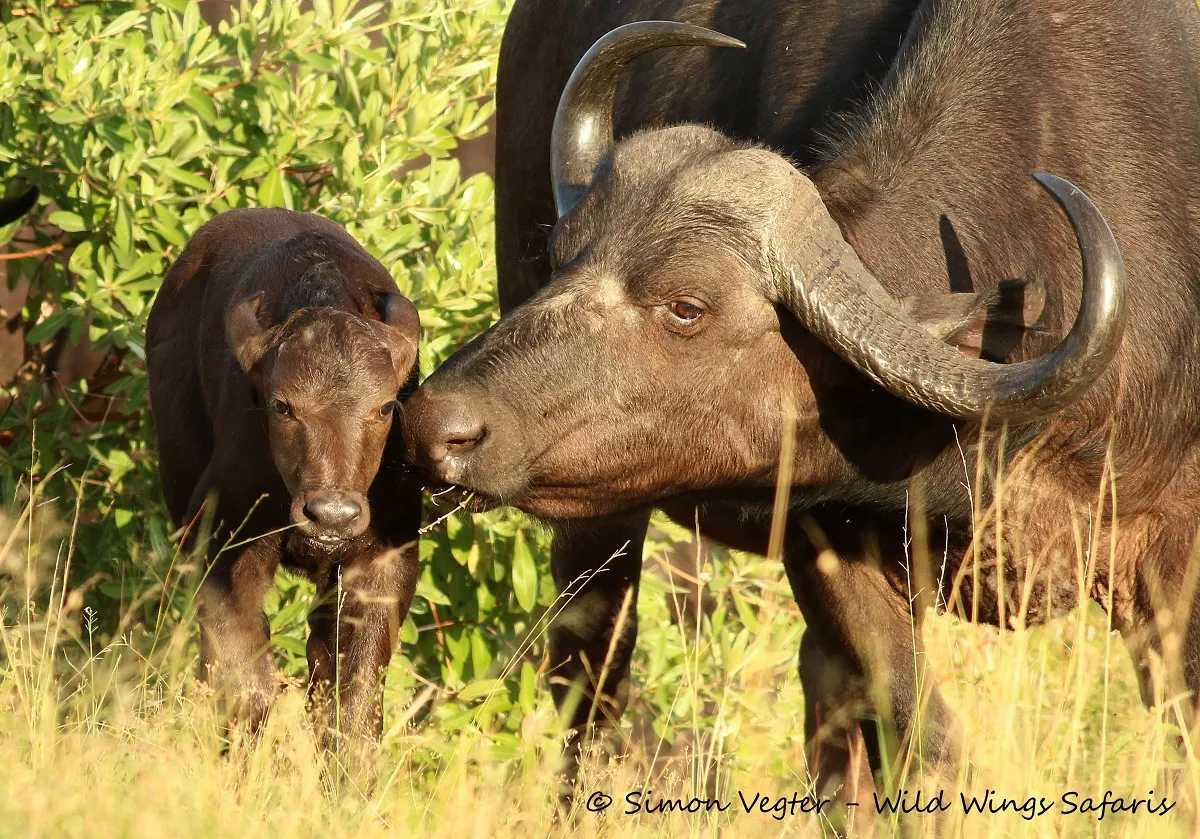
Mother Love
There's footage of buffalo tossing lion into the air with a well-placed toss of its head and its strong horns can rip open a thick hide with ease. They've even been known to chase lions up trees.
6. They never forget a wrong
Next to the elephant, the African buffalo is renowned for its exceptional memory. They are known to ambush and attack hunters that have wounded or injured them – even years later!
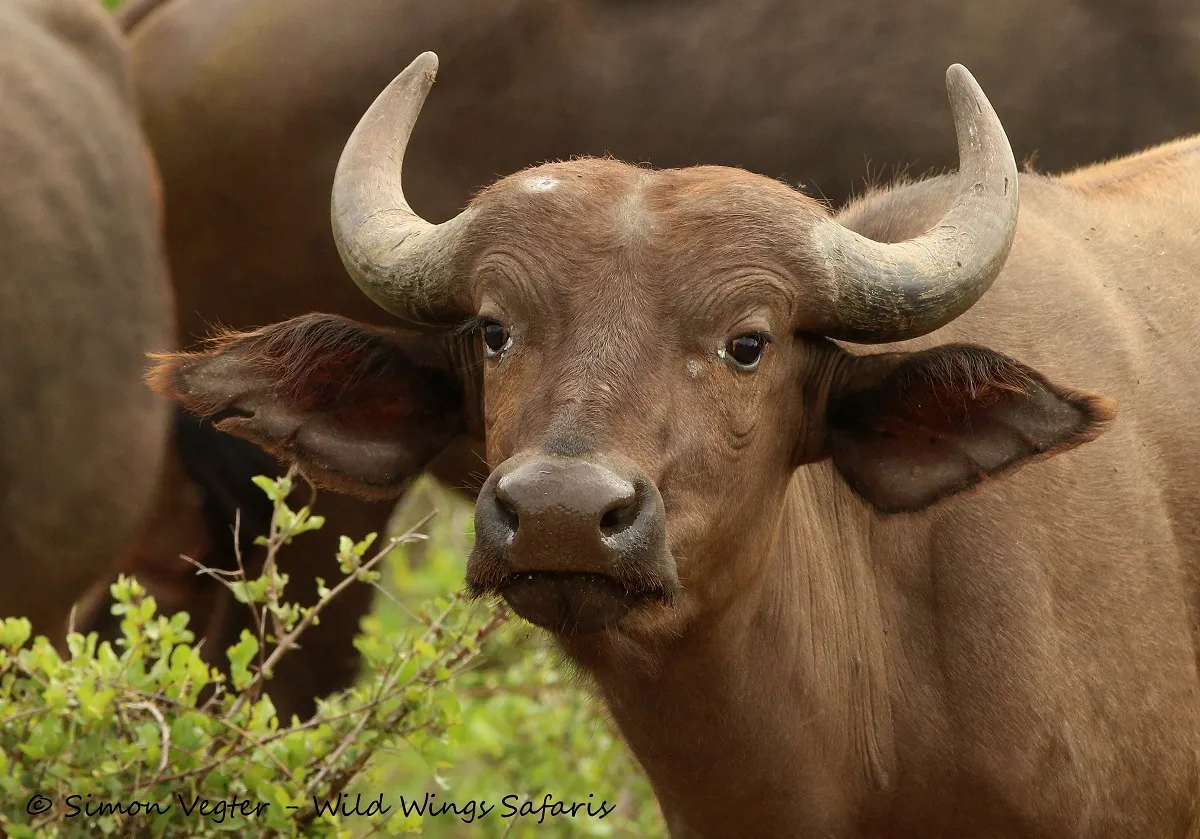
A young buffalo calf
They kill more hunters in Africa than any other animal. They've also been known to kill lion cubs from prides that have attacked and killed members of their herd in the past.
More quick facts about African or Cape Buffalo:
Latin Name: Syncerus caffer
- They have poor eyesight and hearing, but they have an excellent sense of smell.
- March to May is generally their mating season. Gestation is about 9 - 11 months and ends in a single calf. Twins are extremely rare.
- Buffalo are excellent mothers with an exceptionally strong bond with their young. A calf suckles for about a year and is totally dependent on its mother during this time.
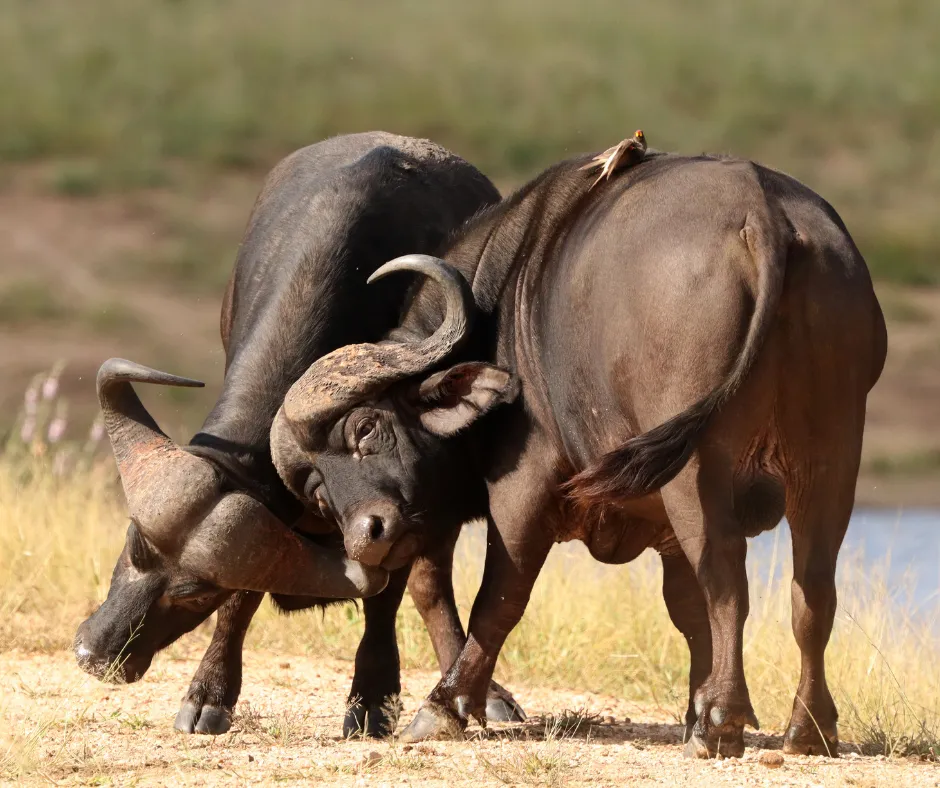
Two buffalo going head to head.
- Mating season of African buffalo takes place between March and May. Pregnancy lasts 11 and half months and ends with one baby (calf).
- In their natural habitat, an African buffalo lives for an average of 20 years.
- They are herbivores and enjoy grass and herbs but will eat shrubs and trees if no other food is available.
You may also want to look at
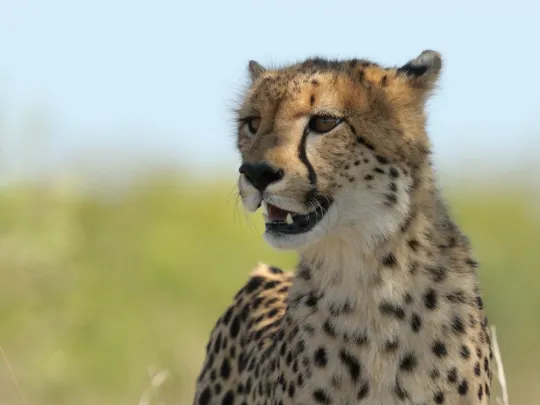
Best Places To See Rhinos, Leopards, Cheetahs or Wild Dogs
What are the best destinations to see rhinos in Africa? What about some of the more elusive predators, such as leopards, cheetahs or wild dogs? These animal species are not equally common everywhere, and it helps to know where you might be most likely to see them.
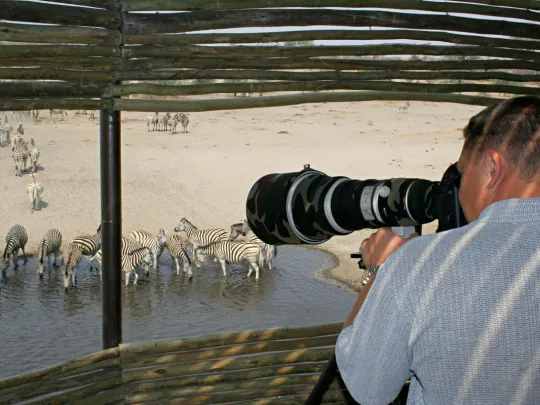
12 Wildlife Photography Tips For Your Next Photographic Safari
Avoid the most common mistakes and make the most of your photographic safari with these 12 tips for beginners and more serious wildlife photography enthusiasts.
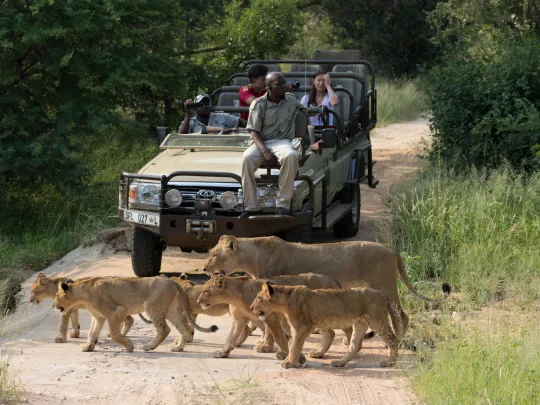
7 Great Ways to Get the Best Wildlife Viewing Experience
So you've finally made it. Tickets booked, safari itinerary done and dusted. Counting the days … but how will you enjoy the actual game viewing experience?
About the author

A 'word smith' or copywriter with over 25 years experience, love travelling, wildlife and conservation; fascinated by alternative energy, alternative building and alternative health. Consummate reader and traveller, both internationally and southern Africa. Have two remarkable daughters that continue to amaze and teach me daily. Consider myself privileged to live on the best continent on the planet.









